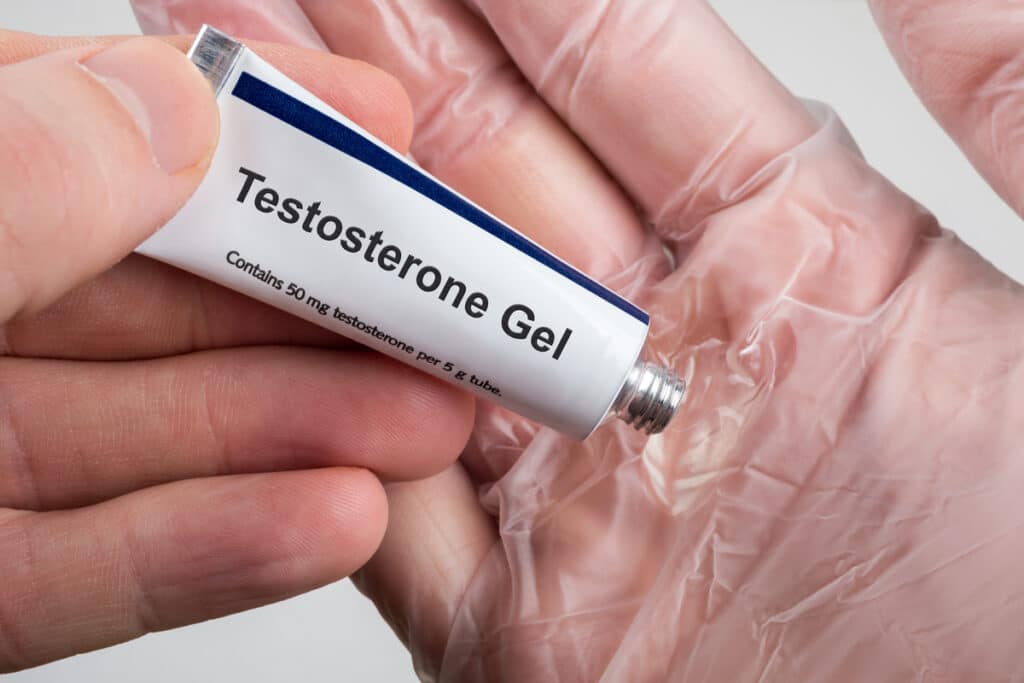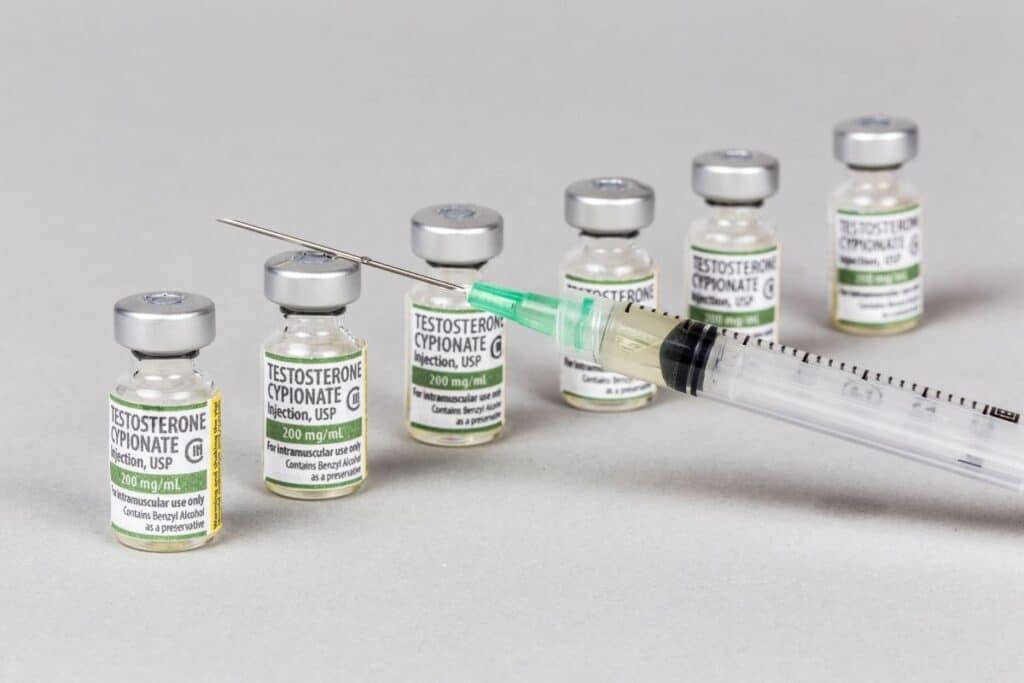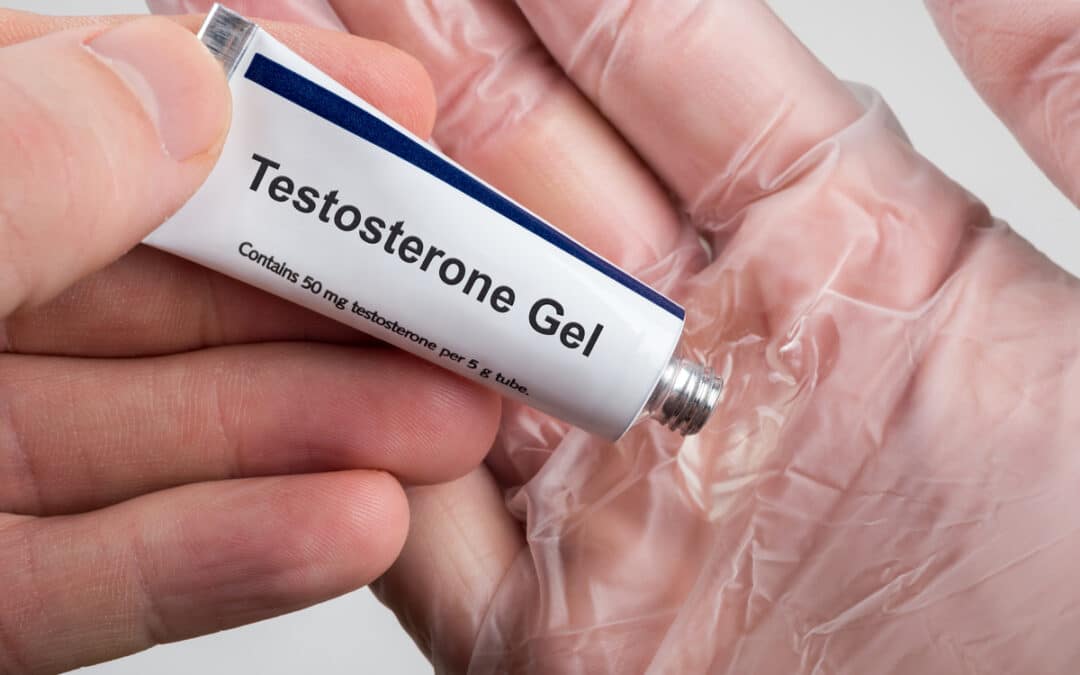Testosterone replacement therapy can be used to increase levels of testosterone/androgen (which is the male sec hormone), in those who have unnaturally low levels of the hormone, and are suffering health issue. It can also help those that are at risk of developing health issues because of it.
In men, male hypogonadism can be treated with supplemental testosterone.

However, women may also be prescribed testosterone replacement therapy, if they have low levels of the hormone, resulting from disease, disorder, or menopause.
Read on to learn more about the causes of low testosterone in men and women, the symptomatology, treatments and potential side effects.
Testosterone Therapy Side Effects
There are various risks that are associated with testosterone replacement therapy, including (but not limited to):
- Sleep apnea, which could worsen an existing condition, or cause sleep apnea to spontaneously develop. Sleep apnea is a potentially serious sleep disorder, where breathing repeatedly stops and starts.
- Increased acne, or other skin based irritations.
- Increased noncancerous growth of the prostate (which is medically known as prostatic hyperplasia), as well as increased growth of existing prostate cancer.
- Enlarged breasts.
- Limited sperm production, which results in the testicles shrinking.
- Too many red blood cells being produced by the bone marrow, which could contribute to increased risk of a blood clot forming. The clot (or a chunk of it) might then break loose, travel through your blood stream and block blood flow to important organs (like the lungs, which would be called a pulmonary embolism, or the brain, which is ischemic stroke).
Low Testosterone Symptoms
Testosterone levels naturally decrease in everyone as we age, and our endocrine system (which manufactures, releases and responds to hormones) becomes less active.
However, dysfunction or disease can cause abnormally low testosterone levels as well, so you should stay on guard for declining levels of the hormone. There are a few symptoms that you should look out for as a sign of low testosterone.
In men, low testosterone can look like:
- Low sex drive/low libido
- Erectile dysfunction
- Fatigue or poor energy levels
- A decrease in muscle mass
- Loss of body hair and facial hair
- Increased difficulty concentrating
- Feelings of depression
- Feelings of irritability
- General low sense of well-being
Low Testosterone In Women
In women, low testosterone can be caused by a few different factors.
The most common cause associated with low levels of the hormone T, long term use of various methods of birth control, like birth control implants, contraceptive patches, or hormone implants.
Ovarian failure (where your ovaries stop functioning properly) can also result in lowered levels of testosterone.
Ovarian failure can be the result of radiation treatment for cancer, and eating disorders, though it is most commonly caused by menopause, which happens to all women as they age.
Therefore, a woman who is going through menopause might develop an imbalance in their testosterone levels.
Tumors on certain parts of the body, particularly glands like the pituitary gland, can cause hormonal imbalances, such as low levels in women. Taking certain medicines can also affect testosterone levels, like antihypertensive and opiate medication.
In women, low testosterone can look like:
- Low libido/sex drive
- Weight gain
- Mood swings or mood changes, particularly anxiety based ones
- Thinning hair
- Skin may start to become drier
- A decrease in overall muscles mass
- An increase in body fat
- Loss of strength
For women, having low testosterone long term can also contribute to more serious health issues, like heart disease, poor memory, or a decrease in bone density.
If you are a woman who believes that you have below normal testosterone levels, then you can talk to your doctor about hormone replacement therapy, or testosterone replacement therapy, to rebalance your hormone levels.
Low Testosterone Treatment
If you are suffering from abnormally low levels of testosterone, then your doctor might prescribe you testosterone supplements and hormone replacement therapy.

These come in a few different forms:
- A transdermal skin patch (also known as an adroderm) which can be used in hormone therapy. A patch is applied on the arm or upper body, and testosterone will be absorbed by your body through your dermis.
- Gels, such as AndroGel and Testim can be used to replace testosterone. You will apply small packets of clear gel once a day. The testosterone in the gel is then absorbed through the skin. Other kinds of T gel, such as Natestro is a gel applied inside of the nose.
- A testosterone mouth patch, such as Striant, is a tablet that sticks to the upper gums, just above the incisor. It is applied twice a day, and continually releases testosterone into the blood via the oral tissues.
- Testosterone injections or implants can be injected directly into the muscles, or implants into the soft tissues as pellets, through this, your testosterone will slowly absorb into the bloodstream.
You might notice that there is no testosterone pill on this list – although oral testosterone supplements are available, there are some medical experts that believe oral consumption of T can have a negative effect on the liver, damaging and/or weakening it.
Other methods, like skin patches, gels, orally disintegrated tablets or injections bypass the liver, and get testosterone directly into the bloodstream (without going through the digestive system).
Low Testosterone Causes
Low testosterone (also known as male hypogonadsm) is a condition in which the testes do not produce enough of the male sex hormone testosterone. There are a few predominant causes for testosterone, here are a few:
- Injury or trauma that interrupted blood supply to the testes.
- Infection of the testes (which is known as orchitis).
- Chemotherapy.
- Metabolic disorders (such as hemochromatosis, where there is too much iron in the body).
- Dysfunction of the pituitary gland, or tumors on the pituitary gland.
- Medications including opioids, the hormone supplements that are used to treat prostate cancer and steroids (like prednisone).
- Alcohol abuse and liver cirrhosis.
- Chronic kidney failure/renal failure.
- HIV/AIDS.
- Inflammatory conditions.
- Kallman syndrome (which is abnormal development of the hypothalamus, which is the gland in the brain that controls many different hormones).
- Klinefelter syndrome (which is a generic condition where a male is born with an extra copy of the X chromosome). It is also known as XXY syndrome.
- Having high levels of the milk-producing hormone prolactin in the body and bloodstream.
- Obesity or extreme/rapid weight loss.
- Uncontrolled type two diabetes.
- Congenital defects that have been present since birth.
- Obstructive sleep apnea.
- Aging, excessive estrogen, which is usually from an external or environmental source.
- Previous anabolic steroid abuse.
- Severe primary hypothyroidism.
- Delayed puberty.
- Traumatic head injury.
- Radiation exposure or surgery to the brain.
It is worth noting that as a male ages, the amount of testosterone in their body will gradually drop.
The natural decline in testosterone begins around age thirty, and T production drops by about 1% per year, throughout the rest of their life.
Final Thoughts
If you think that you might have abnormally low testosterone levels and are wondering whether testosterone therapy might be the right thing for you, you should talk to your doctor or a medical professional about the risks and benefits associated with the therapy.
Before putting you on a course of testosterone replacement therapy, your doctor will probably measure your hormone levels to make sure that low testosterone is what is causing your health issues.
Being prescribed testosterone replacement therapy is uncommon for low testosterone levels that fall into the normal and aging range for your age group – as we have mentioned, as we age, the level of sex hormones in our blood stream naturally decreases.
Treating normal aging with testosterone therapy is not advisable – and if you do not have a proven medical condition that is causing your decline in testosterone levels, your doctor might suggest more natural methods to boost testosterone production.
These more holistic treatments can be things like losing weight, and increasing muscles mass through things like resistance training/weightlifting.

